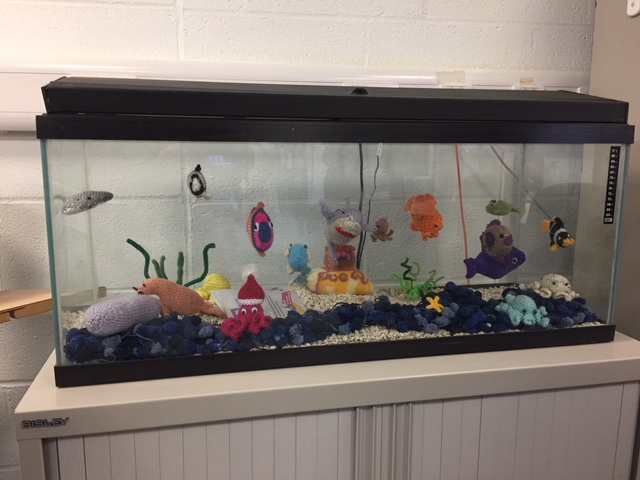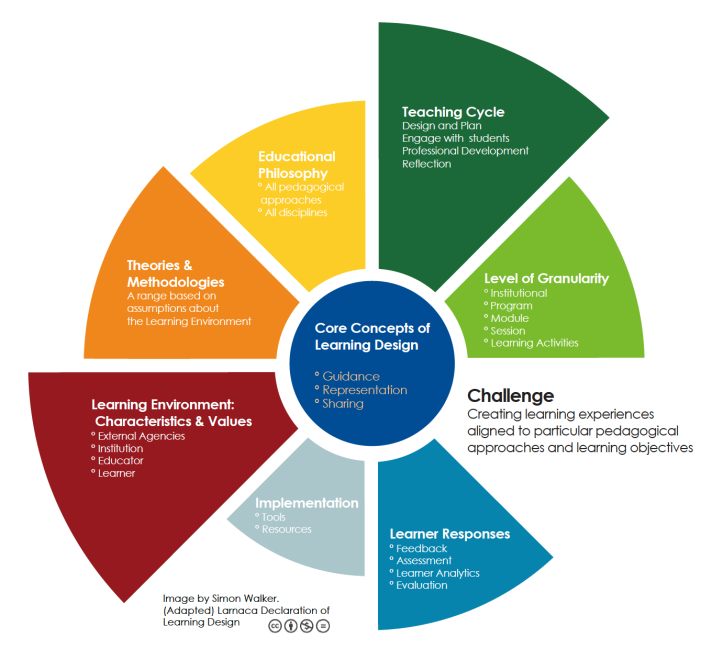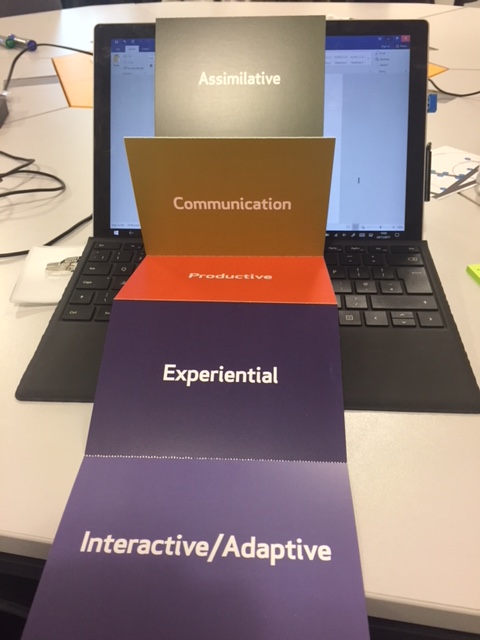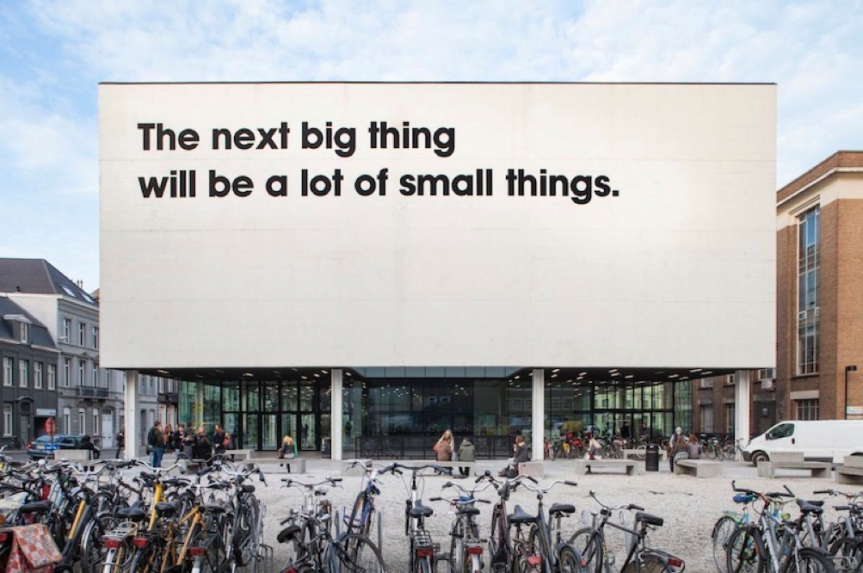
Loved the quirky knitted fish!
In the post Anyone for T I asked if T for Technology and T for Teaching have merged? The question came about following a restructure. My role changed from Academic Technology Enhanced Learning Advisor to Teaching Enhancement Advisor. What’s the difference?
In both roles I’m working towards putting the digital behind the design. Learning and teaching enhancement for me is about learning activities, with or without technology but – in 2017 – most probably with.
For many staff, technology is not the driving force. TEL people are too often seen as techies, fixers of computers and data analysts. This fixed identify is hard to break especially as many of us can fix a PC (or at least check the wires and plugs!) and know something about data from a dashboard, spreadsheet or research perspective. Truth is, many of us are education developers with a range of skills and experience around curriculum and programme design. We might not have all the answers but we know where to get them and when it comes to technology – it goes wrong for us too. Well, for me at least as colleagues will testify!

Last week Patrick Lynch and I attended the Learning Design Cross Institutional Network event at the University of Oxford. It was the networks 7th meetup, our first and hopefully not the last. The next is at Leeds, literally down the road. We might take a team. Reinvent the awayday. Back to the times when it meant being off campus – not in a room in a building you don’t often go to.
Learning design is the enhancement of learning and teaching in the way I understand it. Not technology first but pedagogy first and foremost all the way home.

These are my key takeaways from the event. If you’re a learning technologist who finds them familiar you might also be a learning designer too.
- LD focuses on the activity the learner does rather than the delivery of content
- LD is about optimising the environment for learning to take place
- LD is about changing thinking more than changing tools
- LD requirements vary across disciplines so there’s no one-size-fits-all model
- LD builds in feedback loops to assess effectiveness during rather than the end
- LD is scholarly i.e. research informs practice and practice informs research
- LD visualisations have been shown to influence teaching practice (see Toetenel and Rientes (2016) below*)
We all arrive at learning design from different directions (the topic of a future blogpost). Neither Patrick nor I have worked in content development teams but we’ve both have had roles working directly with staff to support and scaffold their own pedagogic practice.
Gill Ferrell from Jisc presented an overview of their work in this area. All familiar. A reminder we’ve worked in the sector for some time and there are great and free resources here Jisc Design Studio
- Design for Learning (D4L) Programme 2006-2008
- Curriculum Design Programme 2008-2012
- Curriculum Delivery Programme 2008-2010
- Assessment and Feedback Programme 2011 -2014
Gill reinforced how the resurgence of interest in learning design demonstrates a shift of emphasis in a number of ways:
- shift away from learning design as the delivery of content and what teachers do, to the designing of learning activities and focus on what students do.
- shift away from seeing assessment of learning to assessment for learning as a future driver with greater emphasis on the role of feedback and timely dialogue with students.
- learning analytics used to map assessment to prevent bunching and identify places where feedback loops take place.
- Appreciative Inquiry as a methodology to focus less on problems and more on what works well and how to build on it.
HE is changing. My last blog post Perfect Academic Storm was about Degree Apprenticeships. Aimed at those in full-time employment and paid for by employees, these ‘new for some – less new for others’ programmes are 2017 equivalent of work based distance learning. More importantly – they have the potential to put learning design in the spotlight. To be relevant to the work place activities will need to apply theory to practice which is both experiential and problem based. Students will need to become independent learners not only managing their time effectively but also co-constructing negotiated modules and assessments. Learning design practitioners can make this happen. With or without technology but most probably with,

Learning gain is another new layer of HE and also has implications for learning design. Helen King from HEFCE defined learning gain as the improvement in knowledge, skills, work-readiness and personal development made by students during their time spent in higher education. There are a number of current projects exploring what this means and how to measure it. Outputs will drive an exploration of how learning design can embed learning gain in the student experience. Definitely a space to watch.

The sense of learning design déjà vu was reinforced with Katharine Reedy’s overview of learning design at the OU. Their taxonomy describes learning design as ‘a methodology for enabling teachers/designers to make more informed decisions in how they go about designing learning activities and interventions, which is pedagogically informed and makes effective use of appropriate resources and technologies’. (Conole, 2012: 121) Sounds obvious yet still a new concept for many. Katharine bought some Activity Planners and a reminder of the Word Wheel Again, so many great free resources available online. You almost never need to make anything ever again!

The heart of our session was a call to bring together learning analytics and learning design. To reimagine data as feedback and create designs with feedback points throughout rather than a single evaluation at the end. To be agile enough to respond to data which suggests students are doing well or less well than expected. One of Patricks favourite images is one saying the next big thing will be lots of small things.

This is right – we have all the pieces of the jigsaw but need a different way to put them together. The approach to enhancement PAtrick and I are developing is called Design for Active Learning (D4AL). It’s like a baseline jigsaw which can then be adapted to make a range of different activity images. More about this in the next blog post next week.
Thanks to everyone at LD-CIN for a great day and we’re looking forward to meeting up again next year.
LDCIN meeting #8 is 16th February 2018 at the NHS Leadership Academy, 3 Sovereign Street, Leeds, LS1 4GP.
Jiscmail list LEARNINGDESIGN@JISCMAIL.AC.UK
LD-CIN website https://sites.google.com/site/learningdesignsig/home
*OU research on connecting big data sets to learning design
- Toetenel, L. and Rientes, B. (2016) Learning Design – creative design to visualise learning activities. Open Learning. The Journal of Open, Distance and e-Learning, 31:3, 233-244.
- Toetenel, L. and Rientes, B. (2016) Analysing 157 Learning Designs using Learning Analytic approaches as a means to evaluate the impact of pedagogical decision-making. British Journal of Educational Technology 47(5) pp. 981–992.